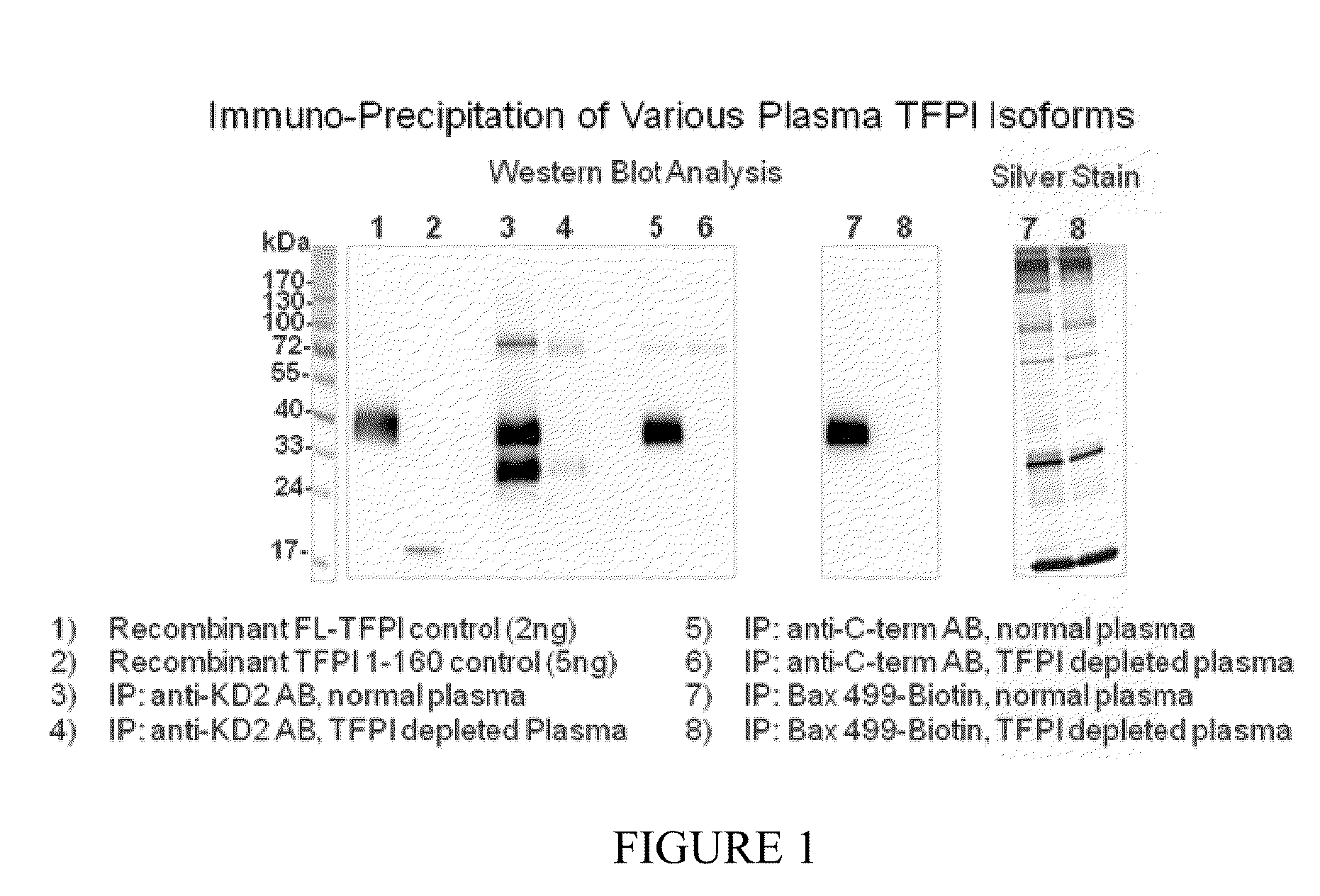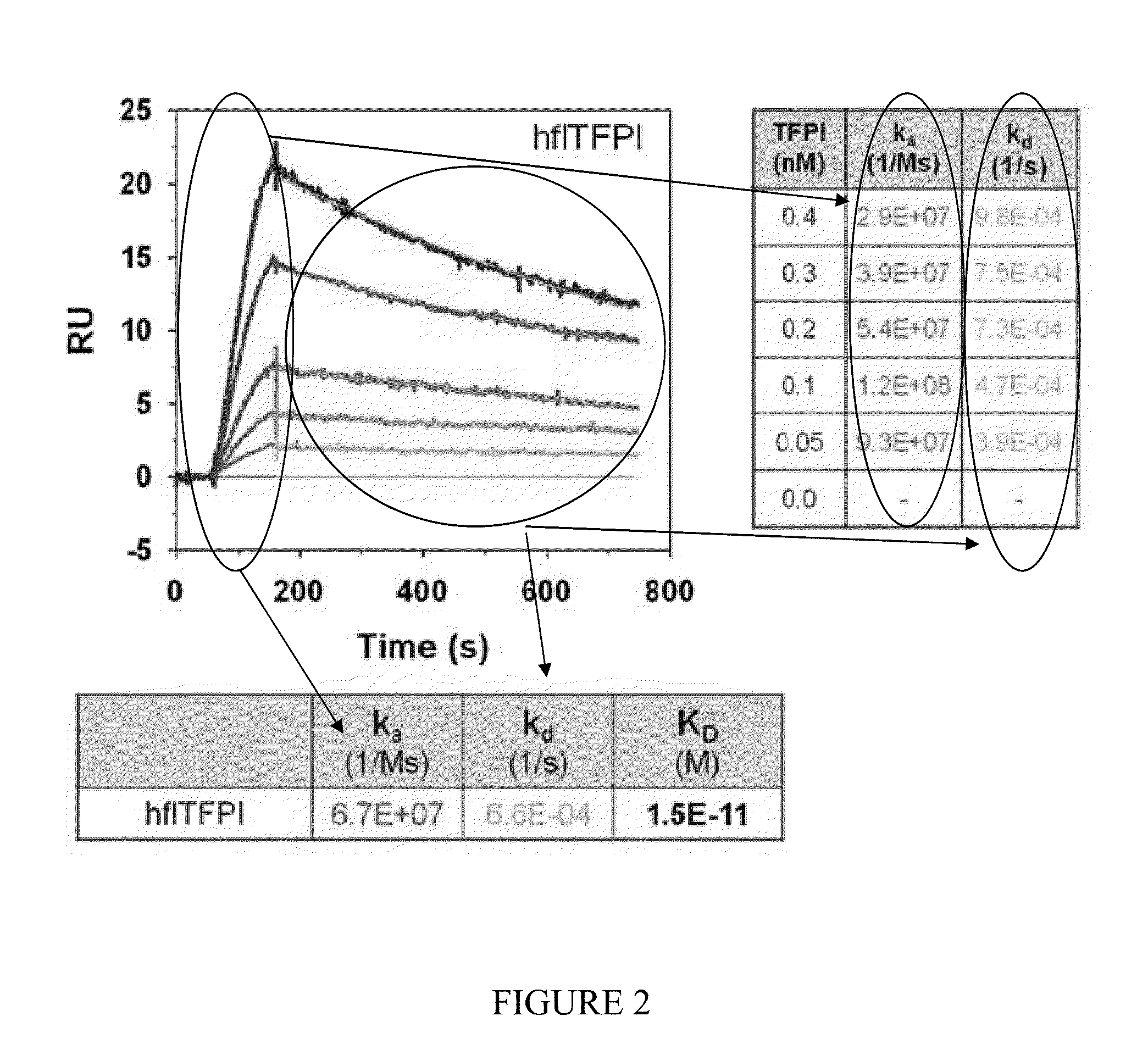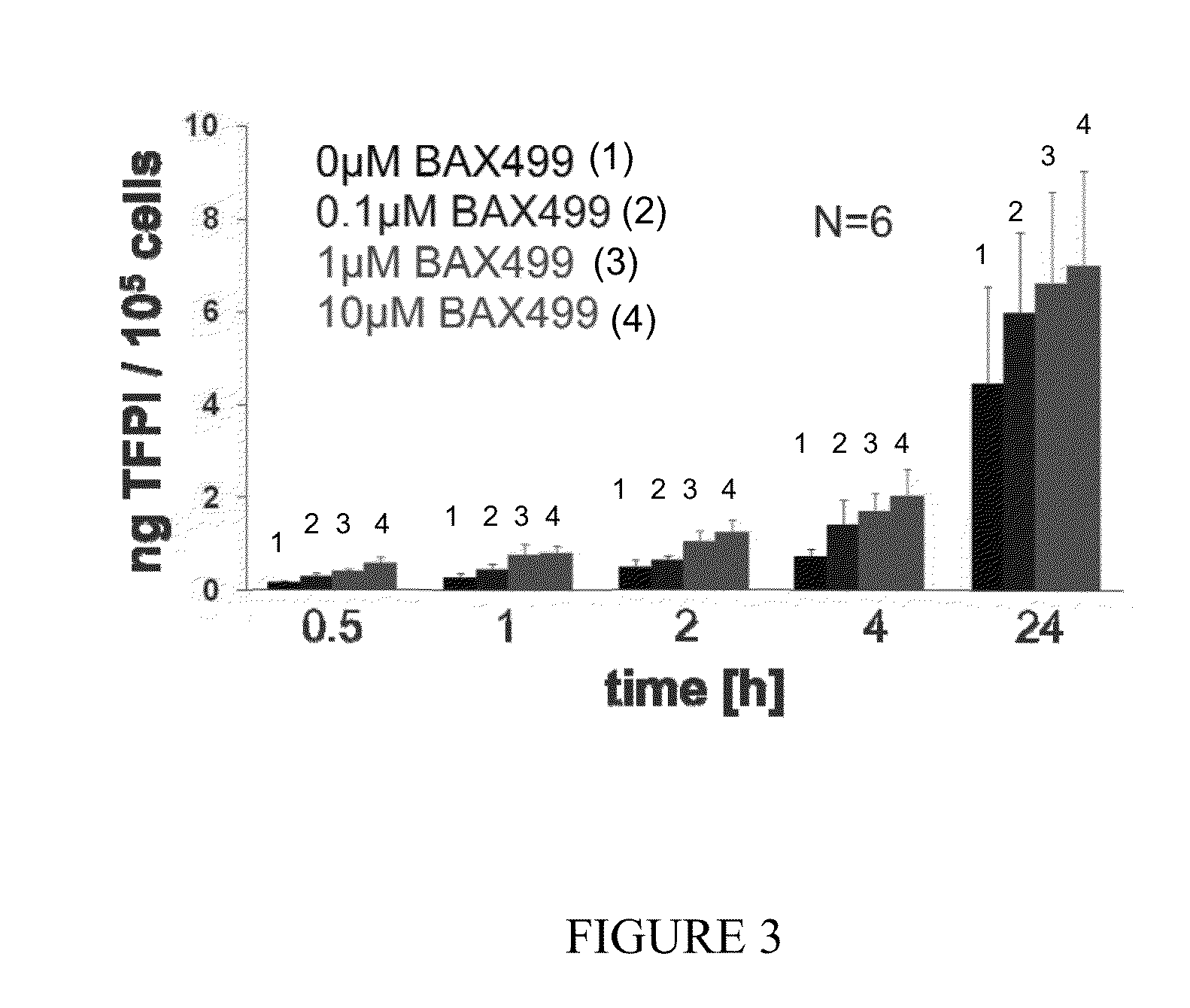Aptamers to tissue factor pathway inhibitor and their use as bleeding disorder therapeutics
a technology of tissue factor and pathway inhibitor, which is applied in the direction of instruments, extracellular fluid disorder, drug compositions, etc., can solve the problems of retaining some limitations of concentrates and more highly purified plasma derived factors, relatively short half-life of molecules, and high cost, so as to increase the procoagulant effect of fviii, increase the anticoagulant activity of subjects, and increase the effect of procoagulant
- Summary
- Abstract
- Description
- Claims
- Application Information
AI Technical Summary
Benefits of technology
Problems solved by technology
Method used
Image
Examples
example 1
BAX 499 Had Pro-Coagulant Effect in Non-Human Primate Model
[0189]This example describes the evaluation of tissue factor pathway inhibitor (TFPI) concentrations, both total and full-length TFPI, in plasma samples from cynomolgus monkeys.
EXPERIMENTAL PROCEDURES
Sample Collection and Shipment
[0190]Plasma samples, anticoagulated in dipotassium (K2)EDTA, were collected from monkeys prior to dosing (Week −1), on Day 1 at 2, 8, 24, and 48 hours post dose, on Days 10, 87, and 178 at predose and 2, 8, 24, 48, and 72 hours post dose, and on Day 181 at 120 and 240 hours post dose. In addition, samples from some monkeys were collected on Day 239 following an 8-week recovery period after the last BAX 499 dose on Day 181. Plasma samples were stored at −80° C.
[0191]TFPI concentrations were analyzed in plasma samples from 4 animals (2 males and 2 females) in each of 4 dose groups. Group 1 monkeys (1006-M, 1105-M, 1505-F, and 1506-F) received vehicle control. Group 2 monkeys (2005-M, 2006-M, 2505-F, ...
example 2
Human Phase I Clinical Trials Demonstrated that BAX 499 Leads to Unexpected Anti-Coagulant Activity
[0226]A human Phase I clinical trial sought to determine safety and pharmacokinetics in hemophilia patients. The trial used a population of hemophilia A and B patients with all severities. The objectives were to assess pharmacokinetics of BAX 499 after single and multiple doses by intravenous and subcutaneous routes of administration, to assess pharmacodynamics of BAX 499 using various assays of coagulation, and to evaluate the safety, tolerability, and immunogenicity of BAX 499. The clinical design was a randomized, double-blind, placebo-controlled, dose escalation study in male hemophilia patients, aged 18-75 years, and conducted in three parts.
[0227]Part A was single ascending dose (SAD). N=6, 3 dose levels: 3, 12, and 36 mg subcutaneous. Each subject randomized to 3 dose levels (2 active / 1 placebo) in random order. Part B was subcutaneous to intravenous crossover. N=5, 4 subjects t...
example 3
Properties of the BAX-TFPI Complex Formation
[0230]Immunoprecipitation studies and biomolecular interaction analysis were performed to identify the physiologic TFPI target for BAX 499 interaction and to characterize the kinetics of binding.
Immuno-Precipitation of Plasma TFPI by Anti-TFPI Antibodies
[0231]TFPI antibodies were immobilized on an agarose resin with a Pierce® Direct IP Kit (Thermo Scientific) according to the manufacturer's instructions. Briefly, monoclonal anti-TFPI-KD2 antibody (Sanquin, White Label, MW1845) or monoclonal anti-TFPI-C-terminal antibody (Sanquin, White Label, MW1848), 40 μg each, were coupled to 100 μL of the amine reactive AminoLink Plus Coupling Resin included in the Kit. After quenching of residual active amine groups the resin was ready to use for immunoprecipitation.
[0232]For immune-precipitation of TFPI isoforms human pooled normal plasma (George King) or human TFPI depleted plasma (American Diagnostica) which served as a negative control, 2 mL each,...
PUM
| Property | Measurement | Unit |
|---|---|---|
| lag time | aaaaa | aaaaa |
| dissociation constant | aaaaa | aaaaa |
| dissociation constant | aaaaa | aaaaa |
Abstract
Description
Claims
Application Information
 Login to View More
Login to View More - R&D
- Intellectual Property
- Life Sciences
- Materials
- Tech Scout
- Unparalleled Data Quality
- Higher Quality Content
- 60% Fewer Hallucinations
Browse by: Latest US Patents, China's latest patents, Technical Efficacy Thesaurus, Application Domain, Technology Topic, Popular Technical Reports.
© 2025 PatSnap. All rights reserved.Legal|Privacy policy|Modern Slavery Act Transparency Statement|Sitemap|About US| Contact US: help@patsnap.com



